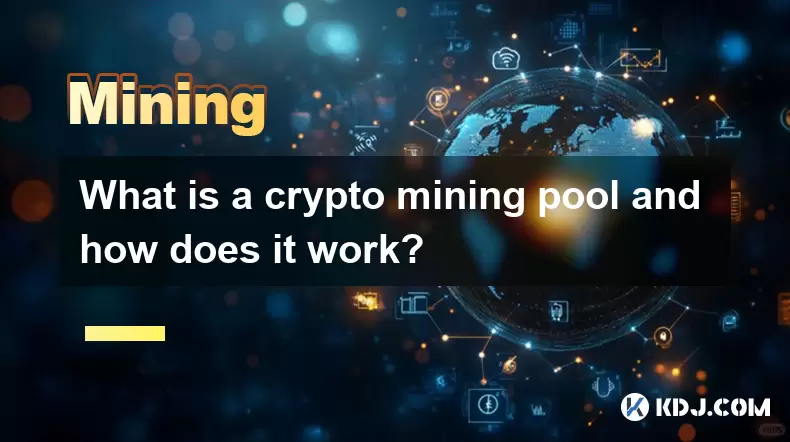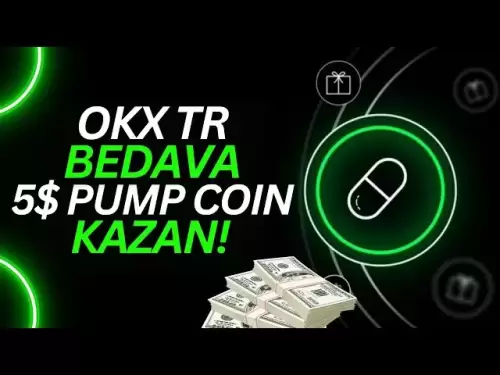-
 Bitcoin
Bitcoin $117400
-0.46% -
 Ethereum
Ethereum $3768
0.60% -
 XRP
XRP $3.551
2.09% -
 Tether USDt
Tether USDt $1.000
0.00% -
 Solana
Solana $203.2
11.30% -
 BNB
BNB $770.9
1.92% -
 USDC
USDC $0.9999
0.01% -
 Dogecoin
Dogecoin $0.2709
-0.02% -
 Cardano
Cardano $0.9024
4.49% -
 TRON
TRON $0.3139
0.60% -
 Hyperliquid
Hyperliquid $45.60
-1.41% -
 Stellar
Stellar $0.4730
-1.34% -
 Sui
Sui $4.025
2.15% -
 Chainlink
Chainlink $19.79
2.19% -
 Hedera
Hedera $0.2724
-2.39% -
 Avalanche
Avalanche $25.93
3.05% -
 Bitcoin Cash
Bitcoin Cash $524.0
-1.83% -
 Shiba Inu
Shiba Inu $0.00001558
0.50% -
 Litecoin
Litecoin $116.7
-0.30% -
 UNUS SED LEO
UNUS SED LEO $8.996
0.00% -
 Toncoin
Toncoin $3.334
1.83% -
 Polkadot
Polkadot $4.506
0.34% -
 Uniswap
Uniswap $10.99
4.83% -
 Ethena USDe
Ethena USDe $1.001
0.03% -
 Pepe
Pepe $0.00001461
3.17% -
 Monero
Monero $320.3
-1.01% -
 Bitget Token
Bitget Token $4.935
0.36% -
 Dai
Dai $0.9998
0.00% -
 Aave
Aave $322.4
-1.25% -
 Bittensor
Bittensor $455.6
9.33%
What is a crypto mining pool and how does it work?
Joining a crypto mining pool lets miners combine resources to boost block validation chances and earn steady rewards.
Jul 03, 2025 at 03:56 pm

Understanding the Concept of a Crypto Mining Pool
A crypto mining pool refers to a group of cryptocurrency miners who combine their computational resources over a network to increase the probability of successfully mining a block. In traditional solo mining, individual miners attempt to solve complex cryptographic puzzles on their own, which can be highly inefficient due to the increasing difficulty levels in most Proof-of-Work (PoW) blockchains like Bitcoin or Ethereum Classic.
By pooling their hashing power, participants collectively enhance their chances of validating a new block and earning the associated block reward. Once a block is mined successfully, the reward is distributed among the pool members based on their contributed processing power. This collaborative approach allows smaller miners to earn more consistent returns compared to solo mining.
How a Mining Pool Operates
When a miner joins a crypto mining pool, they connect their mining hardware—such as ASICs or GPUs—to the pool’s server. The pool software then assigns work units to each miner, ensuring that no two miners are working on the same hash calculation simultaneously. Each miner contributes hashing power, which increases the overall speed at which the pool attempts to solve the cryptographic puzzle required for block validation.
The pool operator monitors all submitted work using a system called share submission. A share represents proof that a miner has completed a portion of the required work. These shares do not necessarily result in finding a valid block but serve as evidence of contribution. When one of the miners in the pool finds a valid solution, the entire pool receives the reward, which is then divided among participants proportionally.
Different Types of Reward Distribution Systems
Mining pools use various methods to distribute rewards among contributors. One of the most common is the Proportional (PROP) system, where miners receive payouts based on the number of shares they submit during a round. Another widely used method is the Pay-per-Share (PPS) model, where miners are paid immediately for each valid share they submit, regardless of whether the pool finds a block. This model offers more predictable income but carries higher risk for the pool operator.
Other systems include Score-based, where recent shares are valued more than older ones, and PPLNS (Pay Per Last N Shares), which calculates rewards based on the last N shares submitted before a block was found. Each method has its pros and cons, influencing both miner earnings and pool sustainability.
Selecting the Right Mining Pool
Choosing an appropriate mining pool involves evaluating several key factors:
- Pool size and hash rate: Larger pools offer more frequent payouts but may have higher fees and centralization concerns.
- Fee structure: Some pools charge a flat fee, while others take a percentage of the block reward.
- Payment frequency: Determine how often the pool disburses earnings—some pay out daily, while others have minimum payout thresholds.
- Server locations: Pools with geographically diverse servers reduce latency and improve efficiency.
- Transparency and reputation: Established pools usually provide detailed statistics and maintain good community feedback.
Miners should also consider the specific cryptocurrency they are targeting, as some pools specialize in certain coins or algorithms such as SHA-256 for Bitcoin or Ethash for Ethereum.
Setting Up Your Miner with a Pool
To join a mining pool, follow these steps:
- Choose a compatible mining pool for your target cryptocurrency.
- Create an account or worker profile within the pool dashboard.
- Download and configure mining software suited for your hardware and algorithm.
- Enter the pool’s server address, port number, username, and password into the mining software configuration.
- Launch the mining software and monitor connection status through logs or dashboards.
- Ensure your firewall or router allows outbound connections to the pool server.
Some pools may require additional configurations, such as setting up stratum protocols or enabling NiceHash compatibility. Always refer to the pool’s official documentation for precise setup instructions tailored to your mining rig.
Frequently Asked Questions
What is a "share" in a mining pool?
A share is a unit of work submitted by a miner to prove they are contributing hashing power. While it doesn’t guarantee a block discovery, it determines the miner’s proportional right to the reward when a block is successfully mined.
Can I switch between mining pools easily?
Yes, you can switch pools by updating your mining software configuration with the new pool’s server address, port, and login credentials. However, some pools may retain pending balances for a few payout cycles after switching.
Are there risks involved in joining a mining pool?
Potential risks include centralization issues if a single pool controls a large portion of the network’s hash rate, and pool operator dishonesty in reward distribution. It’s crucial to choose reputable and transparent pools.
Do mining pools support multiple cryptocurrencies?
Some pools allow miners to switch between different cryptocurrencies based on profitability—a feature known as auto-switching. Others specialize in a single coin or algorithm, requiring manual changes for miners interested in different assets.
Disclaimer:info@kdj.com
The information provided is not trading advice. kdj.com does not assume any responsibility for any investments made based on the information provided in this article. Cryptocurrencies are highly volatile and it is highly recommended that you invest with caution after thorough research!
If you believe that the content used on this website infringes your copyright, please contact us immediately (info@kdj.com) and we will delete it promptly.
- MoonBull's Whitelist Mania: Your Last Shot at 100x Crypto Gains?
- 2025-07-22 10:30:12
- Meme Coins in 2025: Explosive Gains or Fading Fad?
- 2025-07-22 10:30:12
- Kim Keon-hee Crypto Probe: Scandal Rocks South Korea's Political Scene
- 2025-07-22 10:50:12
- ETH Holders in Profit: Value Surge Fuels Bullish Sentiment
- 2025-07-22 09:30:13
- NEAR Protocol's AI Leap: Double-Digit Gains and Future Potential
- 2025-07-22 09:30:13
- Cryptos, Meme Coins, Buy Now: Riding the Wave of Hype
- 2025-07-22 08:30:13
Related knowledge

How are crypto mining profits taxed?
Jul 14,2025 at 12:28am
Understanding Cryptocurrency Mining and TaxationCryptocurrency mining involves validating transactions on a blockchain network and earning rewards in ...

How to keep a mining rig cool
Jul 12,2025 at 01:42pm
Understanding the Importance of Cooling in Mining RigsCryptocurrency mining is an intensive process that places heavy demand on hardware components, p...

How to mine crypto on a gaming PC
Jul 16,2025 at 12:00pm
What is Crypto Mining on a Gaming PC?Crypto mining involves using your computer's processing power to validate transactions on a blockchain network. A...

How to set up a crypto miner
Jul 16,2025 at 09:14am
Understanding Ethereum Gas Fees: What Are They and How Do They Work?Ethereum gas fees are a fundamental aspect of the network, representing the cost r...

Can you mine crypto on a laptop?
Jul 16,2025 at 02:21am
Is It Feasible to Mine Cryptocurrency on a Laptop?Mining cryptocurrency on a laptop is technically possible, but feasibility depends heavily on the ha...

Is crypto mining worth it?
Jul 16,2025 at 01:21am
Understanding the Basics of Crypto MiningCrypto mining refers to the process of validating transactions on a blockchain network by solving complex mat...

How are crypto mining profits taxed?
Jul 14,2025 at 12:28am
Understanding Cryptocurrency Mining and TaxationCryptocurrency mining involves validating transactions on a blockchain network and earning rewards in ...

How to keep a mining rig cool
Jul 12,2025 at 01:42pm
Understanding the Importance of Cooling in Mining RigsCryptocurrency mining is an intensive process that places heavy demand on hardware components, p...

How to mine crypto on a gaming PC
Jul 16,2025 at 12:00pm
What is Crypto Mining on a Gaming PC?Crypto mining involves using your computer's processing power to validate transactions on a blockchain network. A...

How to set up a crypto miner
Jul 16,2025 at 09:14am
Understanding Ethereum Gas Fees: What Are They and How Do They Work?Ethereum gas fees are a fundamental aspect of the network, representing the cost r...

Can you mine crypto on a laptop?
Jul 16,2025 at 02:21am
Is It Feasible to Mine Cryptocurrency on a Laptop?Mining cryptocurrency on a laptop is technically possible, but feasibility depends heavily on the ha...

Is crypto mining worth it?
Jul 16,2025 at 01:21am
Understanding the Basics of Crypto MiningCrypto mining refers to the process of validating transactions on a blockchain network by solving complex mat...
See all articles

























































































